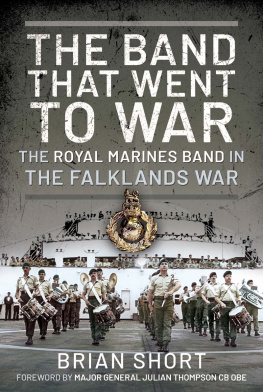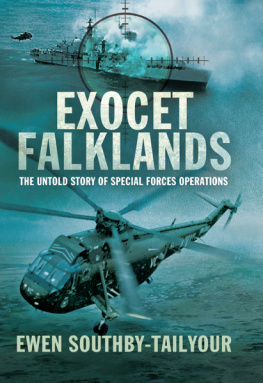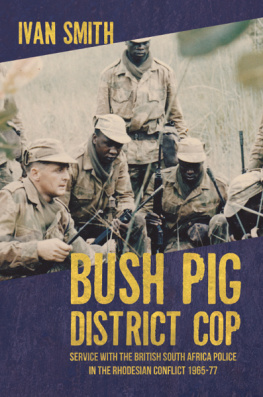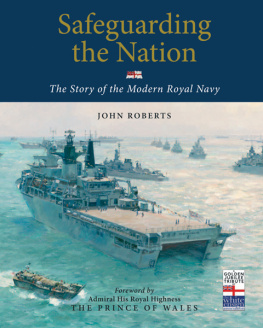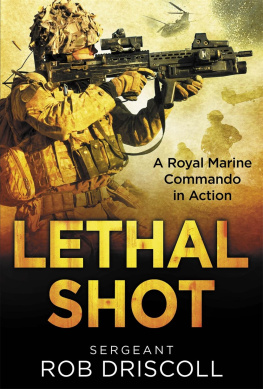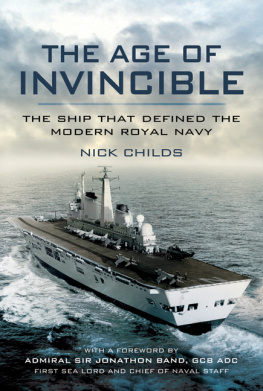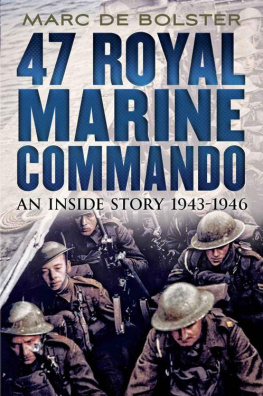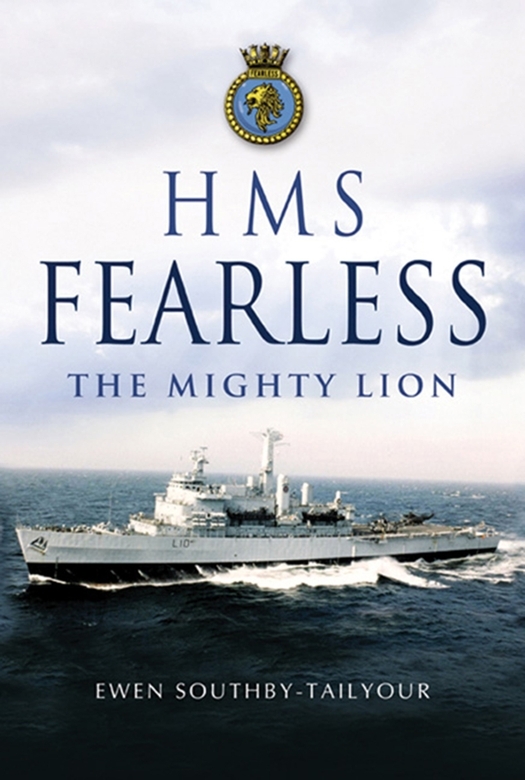Acknowledgements
There is no doubt where my thanks must start and Commodore Tom Cunningham, the last seagoing Commanding Officer of HMS Fearless, heads the list along with his Executive Officer, Captain Brian Warren and his Operations Officer, Lieutenant Commander Rob Wilson. The summons to help prepare HMS Fearlesss biography came from Brian on 2 December 2001 and preceded a flight to Barcelona in March for a meeting with the team, homeward-bound from operations off Afghanistan. Over an introductory lunch ashore, Rob outlined the proposal before I was briefed in detail by Tom and Brian.
At the time the plan was to organize a final paying-off dance in Portsmouth at the end of 2002 to coincide with the sale of a heavily illustrated book covering Fearlesss long life and not just her final commission. Time was short nine months from gestation to publication but it became impossibly shorter with the Labour Governments sudden parsimonious decision to bring her demise forward by six or so months: news that reached the ship during her final foreign port visit. Unhappily, unexpectedly but conveniently, we then had more time to publish a comprehensive tribute to the longest serving Royal Navy ship of her era pace HMS Victory. It crossed my mind to reproduce here the picture of the inaugural re-planning meeting, held in a Barcelona restaurant, but an unusual sense of propriety has overcome me!
The following three-day passage to Gibraltar is worthy of a small tome in itself, sponsored as it was, by a well-known purveyor of fine port and accompanied by dozens upon dozens of well-remembered stories representing almost every rank and skill on board. These anecdotes covered a good part of the ships thirty-plus years, such was the depth of almost continuous experience still contained among that final ships company. Thus my second tranche of thanks goes to the members of the last wardroom, Detachment Sergeant Majors mess, POMEs Mess, Corporals Mess and, for the night before I was poured into the sea-boat outside territorial waters somewhere off Gibraltar at 0300 to members of the Royal Marines Barracks. I remember, too, the encouragement given to me in those heady days by Lieutenant Colonel Steve Bruce, the ships last AOO.
With guidance from Rob Wilson, the general shape of the new book became clear and with the unstinting help of all the surviving Commanding Officers it began to take on the shape I wanted. It would be repetitive to name them here for they head each chapter but my thanks are due to every one of them for this book is, in so many ways, their story as spokesmen for their individual ships company. Three Commanding Officers, very sadly, were not alive to introduce their own chapters so Commander John Lock has done so for his Captain, John Rumble while Rear Admiral Mark Kerr was closely involved with his fathers contribution. My most sincere thanks are due to them both for undertaking this difficult task. Captain Richard Thomas left copies of his Reports of Proceedings from which I have gleaned enough of his views on commanding the ship to allow me, as it were, to speak for him. Surprisingly I could find no photographs from either his time in command or from his subsequent sojourn with the House of Lords but I am indebted to his eldest daughter, Victoria Owen, for her help and especially for the charming photograph of her, her mother and siblings which heads her fathers chapter.
Every Commanding Officer responded willingly to my requests although some did take a little longer than others: nevertheless I am most grateful for the total enthusiasm and absolute desire to help. Wing Commander Clare Walton deserves special thanks for her tenacity and patience in this respect: she will know why! Some Commanding Officers went further and prodded ex members of their ships company to respond and many did, much to the benefit of the book as a whole. Invidious though it may appear, I must single out the ships very first Commanding Officer, Captain Hugh Corbett, who did more than anyone to encourage me and to canvass the surviving members of his team for details of those vital, early, influential days of this new concept. Among those willingly coerced were Commander Peter Shevlin; Commander Peter Baseby; Lieutenant Commander Ken Trace; Commander Tony Smith; Major Tiny Whitworth; Major Jim Carman; Captain Michael Walker, Royal Signals: Sergeant Tom Potts; Colour Sergeant Petterson; Lieutenant Commander John Nichol; the family of the late Chief Shipwright Artificer Reg Eccles; Lieutenant Commander Mike Walton; Captain C D Wareham, RE; Lieutenant Commander Richard Perceval Maxwell; Lieutenant Colonel Robin Bullock-Webster, (Regimental Adjutant of the Irish Guards who helped trace military details of the Hauf Raid); Colour Sergeant Styx Westacott and Sergeant Terry Radley.
Others who have helped throughout the book include Rear Admiral Peter Marsden; Rear Admiral John Carlill; Sir Keith Speed; the late Lieutenant General Sir John Richards; Commander Colin Robinson; Captain Jeremy Ledger; Major Jimmy Nobbs, RE; Major Ian Lamb; Brigadier Roger Dillon; Warrant Officer Moss Pearson (whose address book proved particularly invaluable); Captain Ron Wheeler; CMEM Mick Ahern; Warrant Officer Sammy Carlisle; Warrant Officer Geoff Haywood; Surgeon Captain Douglas Whyte; Commodore Simon Thornewill; RSM Jim Quigley; Miss Kate Adie; Lieutenant Commander Alan George; Lieutenant Nicky Cullen (the only lady officer bold enough to contribute and a most worthy, interesting account it is); Councillor Tony Randerson and Alderman Ted Agar of Scarborough City Council; Lieutenant Bob Lane (Disposal and Reserve Organization) and CCMEA (ML) Tim Slann
Putting aside operational demands on his time, Rear Admiral (then) James Burnell-Nugent rallied to the call with a two-star perspective of having Fearless under command during operations in 2001. Although she had never been under direct two-star operational command in theatre in 1982 I had hoped for a similar comment about her performance in the South Atlantic but my request was peremptorily refused. Despite receiving international praise, not everyone held Fearlesss successful, amphibious command team during the Falklands War in the same high regard, although this is believed to be the only example of such criticism throughout her life.
Requests through all the obvious media outlets produced more stories and brief memories: all those correspondents that are not mentioned above but who have been quoted in the text will find due acknowledgements as they occur, yet, as I say in the Introduction, I had hoped for more offerings from the lower deck. Rear Admiral Jeremy Larken sent his precious Order Books prime research documents that until now had not been seen by the public and all should be grateful for that personal insight into a ship in battle. Commodore James Fanshawe lent all manner of diaries and personal memorabilia which, too, helped to add colour to the overall narrative.
My thanks must include John Ambler and Matthew Little of the Royal Marines Museum and, in particular, Lieutenant General Sir Henry Beverley for releasing, exceptionally, the Wardroom Line Books, allowing me to study them in the peace of my own studio. As a prime research source they were more helpful than most official archives which are subjected to the thirty-year rule: a rule that casts too long and unnecessary a shadow, even over unclassified material. These magnificent volumes are not just the pictorial and cartoon history of the officers activities but are a sometimes irreverent, often satirical, occasionally truthful insight into the life of the ship as a whole. Anyone wishing for such an interpretation of events at every level could do no better than spend a week studying their pages. While the level of cartoon or caricature was, generally, of a high standard I chose to home in on just one artist as a sample: Lieutenant Commander PAF (Paf) Grants likenesses of his chosen subjects are near perfect. Those reproduced within these covers are the best of his excellent collection.



